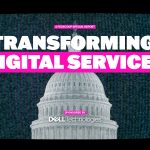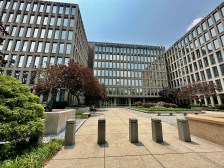- Sponsored
- Sponsored Content
Why CIOs need to reassess the sustainability of their pandemic IT fixes

Arveen Kohli is a sales leader who advises federal government agencies on digital, IT, security and workplace transformation for Dell Technologies.
It’s hard to grasp the breadth and depth of decisions federal IT teams had to make to keep their agencies operating as the pandemic shut offices down, and teleworking went from option to necessity.

Arveen Kohli, Consulting Sales Leader, Federal, Dell Technologies
The adoption of cloud technologies certainly helped make the transition possible. It also demonstrated to federal officials just how this kind of environment could work, so it’s understandable that CIOs and CISOs want to build on that momentum.
However, in the rush to stand up cloud-based applications and remote connections for millions of federal workers, federal IT leaders now face a new phase of technology triage: the need to step back and reassess the long-term sustainability of the IT they put in place.
The sudden push to modernize agency infrastructure and implement solutions designed to support a work-from-anywhere workforce has put federal agencies in a strong position. But it also added a lot of ad hoc solutions into their digital environments, many of which may prove costly or problematic to maintain in the long run.
It’s not too soon, however, for IT leaders to confront a few critical questions: First, do they have a clear picture of what they own and what they’ve added? Second, do they have a longer-term view of what a sustainable IT portfolio looks like? And third, do they and their management teams have a roadmap for what’s required to strengthen their agency’s long-term IT resiliency and agility?
Put sustainability above solutions
Federal agencies have come a long way in determining which assets are operating on their networks and who’s using them. But sustainability can’t happen if you don’t continuously know what you have.
Some of the lessons we’ve learned supporting global enterprises include the realization that while most organizations conduct application profiling, or take the time to assess application dependencies, those efforts often don’t get beyond a stack of reports. The critical information they’ve spent time and money gathering in many cases doesn’t get put into practice. Consequently, organizations would be better served by moving towards a platform strategy that provides a real-time view of their operations.
The goal is to understand what percentage of your workloads are ready to move over to a public cloud; which should remain in a hybrid cloud environment; and which set of workloads will be most sustainable financially over time in those environments. Rationalizing applications and solutions may achieve shorter-term efficiencies. But in the long run, adaptability and agility are better achieved by choosing the right platforms.
Let strategy drive technology
Agency IT departments would also benefit from looking beyond their IT application and workload portfolios and reassessing how they operate and deliver services.
When it comes to long-term IT sustainability, it often makes greater sense to have IT departments functioning more as IT service brokers and providers, capable of matching internal and external needs with the most appropriate technologies, rather than as IT systems managers.
Again, the goal is to keep pace with innovation and adapt quickly to changing requirements. An agile IT service provider ecosystem encourages flexibility rather than equipment refreshes and application updates.
Today’s federal CIOs have a lot of options. By operating more as an IT services broker and fostering an ecosystem of providers who are familiar with an agency’s needs, CIOs can keep their options open, test multiple approaches concurrently, and ultimately serve their internal customers and the public more expeditiously. To foster a more sustainable and flexible future, CIOs should establish an operating environment in which strategy drives technology, rather than having technology drive strategy.
Bring people into the platform
Lastly, while financial considerations remain central to the technology decisions that government agencies make, agencies can’t march forward by pursuing a financial metric without also bringing their workforce along in the process.
Just as the strategy needs to drive the technology, agency leaders must pay greater attention to the impact that strategic technology shifts will have on their employees’ workflows and outcomes. As agencies push to gain greater technical agility, they must also ensure their people get the training they need to be successful.
Technology providers routinely talk about the need for creating an enterprise-wide, holistic view of an organization’s IT environment. The organizations that will excel the most will be those whose leaders create an environment in which people are as much a part of the platform as the technology. The success of those organizations and their CIOs, however, will depend in large part on putting long-term IT sustainability ahead of short-term technical solutions.
Learn more about how your organization can build a sustainable technology future from Dell Technologies.

This story was featured in FedScoop Special Report: Transforming Digital Service - Presented by Dell Technologies






